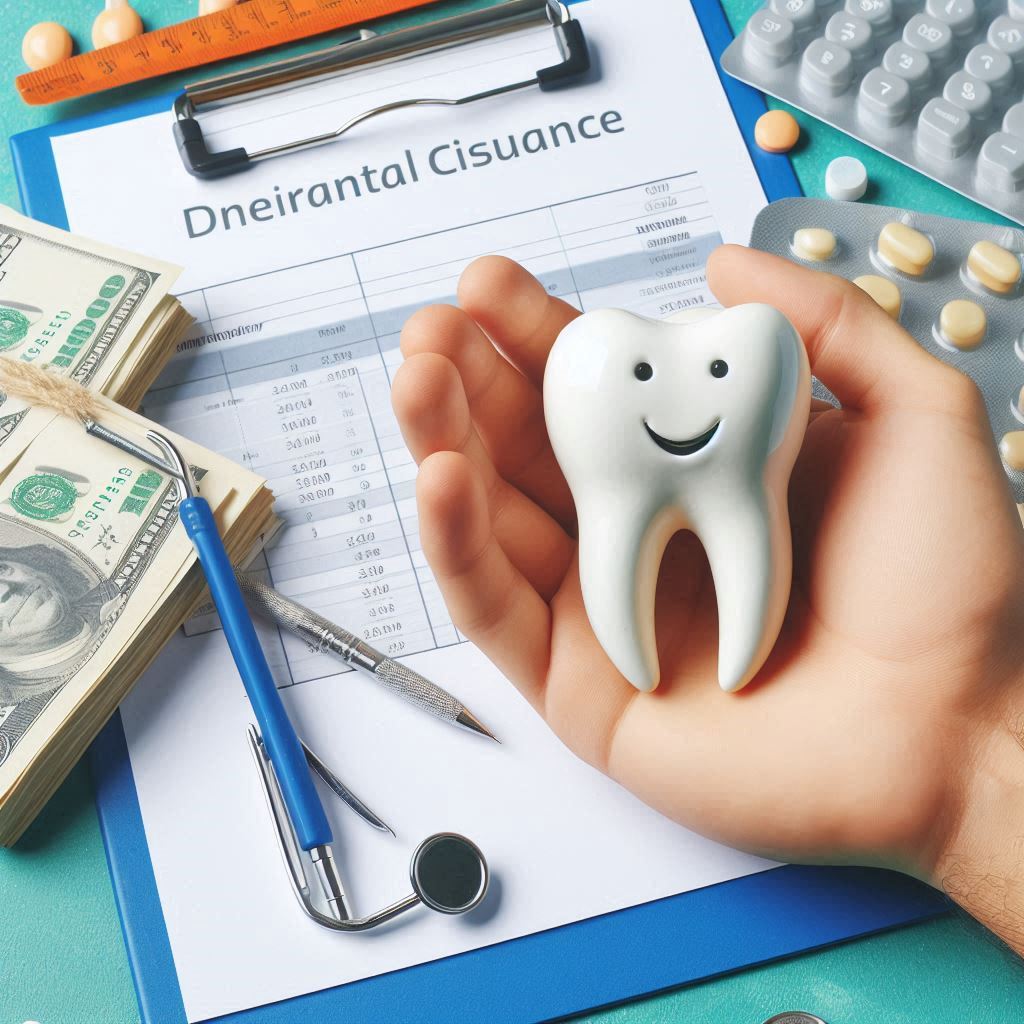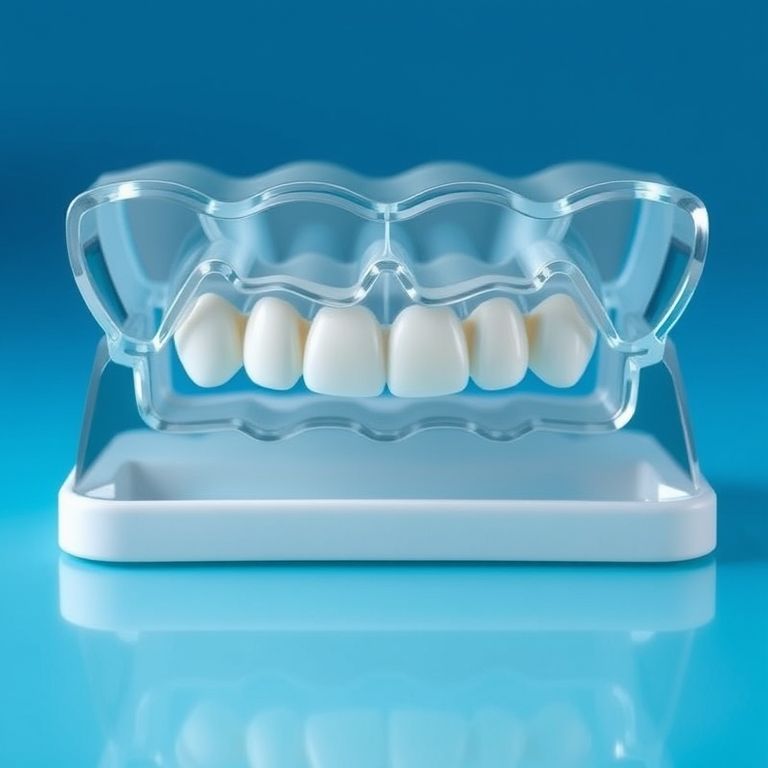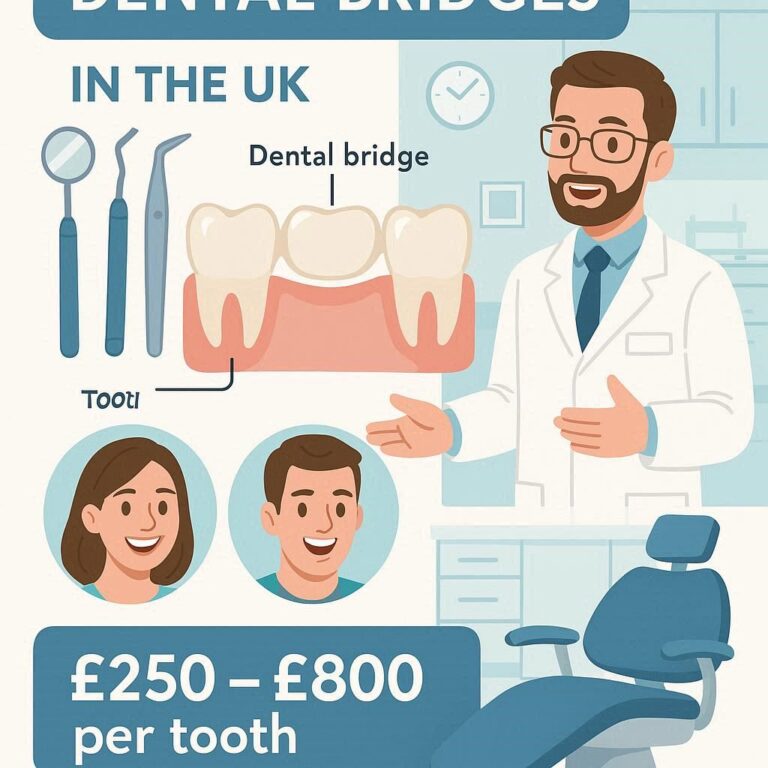The Complete Guide to the Average Cost of a Dental Bridge with Insurance
Missing teeth can affect not only your smile but also your oral health, leading to issues like bone loss, shifting teeth, and difficulty chewing. Dental bridges offer a reliable and cost-effective solution to restore function and aesthetics. However, the cost can be a concern, especially if you’re relying on insurance to help cover expenses.
This comprehensive guide explores the average cost of a dental bridge with insurance, factors influencing pricing, how insurance coverage works, and ways to make the procedure more affordable. By the end, you’ll have a clear understanding of what to expect financially and how to maximize your insurance benefits.

2. What Is a Dental Bridge?
A dental bridge is a fixed prosthetic device used to replace one or more missing teeth by anchoring artificial teeth (pontics) to adjacent natural teeth or dental implants. Bridges help restore chewing ability, maintain facial structure, and prevent remaining teeth from shifting.
Types of Dental Bridges
- Traditional Bridges – Most common type, using crowns on adjacent teeth to hold the pontic.
- Cantilever Bridges – Used when only one adjacent tooth is available for support.
- Maryland Bridges – A resin-bonded bridge that uses metal or porcelain wings for attachment.
- Implant-Supported Bridges – Secured by dental implants instead of natural teeth, offering superior stability.
3. Factors Affecting the Cost of a Dental Bridge
The cost varies widely based on several factors:
Material Choice
- Porcelain-fused-to-metal (PFM): $1,000–$2,500 per unit
- All-ceramic / Zirconia: $1,500–$3,500 per unit
- Gold or metal alloys: $2,000–$5,000 per unit
Number of Teeth Being Replaced
A 3-unit bridge (one missing tooth with two crowns) costs less than a 4 or 5-unit bridge.
Geographic Location
Urban areas tend to have higher prices than rural ones.
Dentist’s Expertise
Specialists (prosthodontists) may charge more than general dentists.
4. Average Cost of a Dental Bridge with Insurance
Breakdown by Bridge Type
| Bridge Type | Average Cost Without Insurance | Estimated Cost with Insurance (50% Coverage) |
|---|---|---|
| Traditional (3-unit) | $2,000 – $5,000 | $1,000 – $2,500 |
| Cantilever | $2,500 – $6,000 | $1,250 – $3,000 |
| Maryland | $1,500 – $2,500 | $750 – $1,250 |
| Implant-Supported | $5,000 – $15,000 | $2,500 – $7,500 (if covered) |
Insurance Coverage Explained
Most dental insurance plans cover 50% of the cost of a bridge after the deductible is met, considering it a “major procedure.” However, some plans may have:
- Waiting periods (6–12 months before coverage kicks in).
- Missing tooth clauses (excluding teeth lost before getting insurance).
- Annual maximums (typically $1,000–$1,500 per year).
5. How Dental Insurance Covers Bridges
Typical Coverage Percentages
- Preventive care (cleanings, X-rays): 100%
- Basic procedures (fillings): 70–80%
- Major procedures (bridges, crowns): 50%
Annual Maximums and Deductibles
- Most plans have a $50–$100 deductible per year.
- Annual maximums usually range from $1,000 to $1,500, meaning insurance won’t pay beyond this limit.
In-Network vs. Out-of-Network Dentists
- In-network dentists offer discounted rates negotiated by the insurance company.
- Out-of-network dentists may result in higher out-of-pocket costs.
6. Ways to Reduce the Cost of a Dental Bridge
- Dental Discount Plans – Alternative to insurance, offering 10–60% discounts.
- Payment Plans & Financing – Many dentists offer monthly payment options.
- Dental Schools & Clinics – Lower-cost care provided by supervised students.
7. Dental Bridges vs. Other Tooth Replacement Options
| Option | Pros | Cons |
|---|---|---|
| Dental Bridge | Faster, less invasive than implants | Requires altering healthy teeth |
| Dental Implant | Long-lasting, preserves bone | Expensive, surgical procedure |
| Dentures | Affordable, non-invasive | Less stable, requires adhesives |
8. The Procedure: What to Expect
- Initial Consultation – Exam and impressions.
- Tooth Preparation – Reshaping adjacent teeth for crowns.
- Temporary Bridge Placement – While the permanent one is made.
- Final Bridge Fitting – Adjustments and cementing.
9. Maintenance and Longevity of Dental Bridges
- Lifespan: 5–15 years (depends on care).
- Care Tips:
- Brush and floss daily.
- Use a water flosser for hard-to-reach areas.
- Avoid chewing hard foods (ice, hard candy).
10. FAQs
Q: Will insurance cover a bridge if the tooth was missing before I got the plan?
A: Many plans have a missing tooth clause, excluding pre-existing gaps.
Q: How much will I pay out-of-pocket for a bridge with insurance?
A: If the bridge costs $3,000 and insurance covers 50%, you’d pay $1,500 (minus deductible).
Q: Are dental bridges worth it?
A: Yes, if you need a fixed, non-surgical solution. However, implants last longer.
11. Conclusion
The average cost of a dental bridge with insurance ranges from $1,000 to $3,500, depending on materials and coverage. Insurance typically pays 50%, but annual maximums and deductibles apply. Alternatives like discount plans and dental schools can help reduce costs. Always consult your dentist and insurance provider for a precise estimate.
12. Additional Resources
- American Dental Association (ADA)
- National Association of Dental Plans (NADP)
- Healthcare.gov – Dental Coverage


